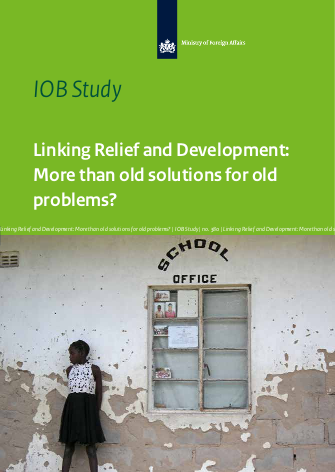
Linking relief, rehabilitation and development (LRRD) is not a new subject. The ‘gap’, as it is called, between humanitarian aid and development is something which has been discussed by policy-makers, development practitioners and aid workers for decades. The problems and potential solutions have been articulated through different discourses, such as ‘early recovery’, ‘disaster risk reduction’ and ‘resilience’. Yet, as comprehensive evaluations on for example the South-East Asia tsunami and the Haiti earthquake have shown, many fundamental challenges to linking short-term, emergency aid to longer-term, sustainable development still remain today.
The report points to the binding constraints that undermine a fluid transition and closer cooperation between relief aid and development. What challenges do policy-makers and practitioners in the field face when trying to link relief to development? How are these challenges being addressed by the current discourses on linking relief to development?
